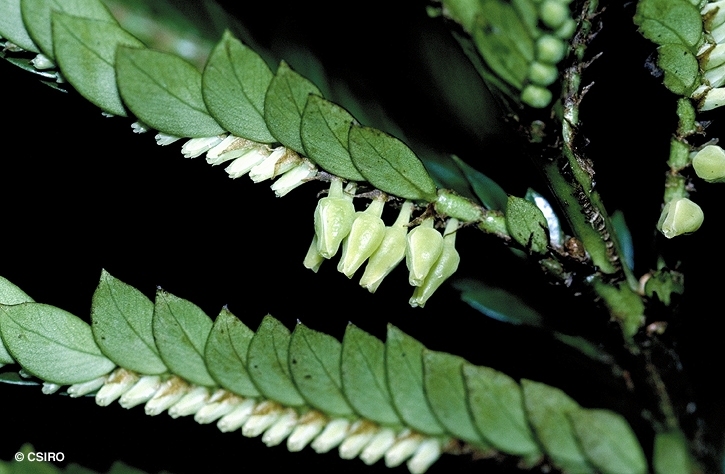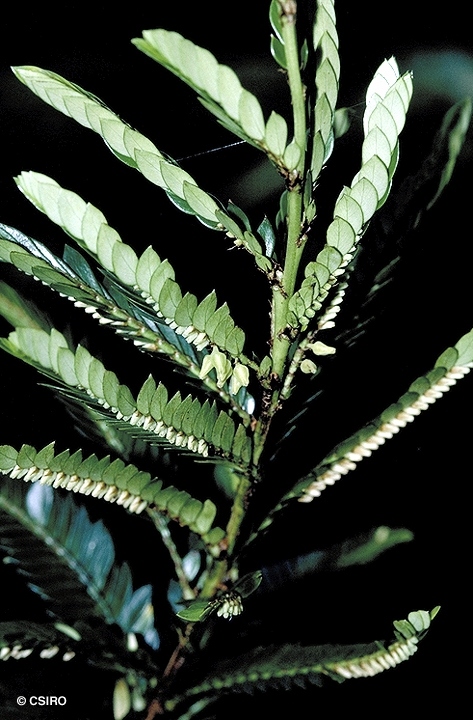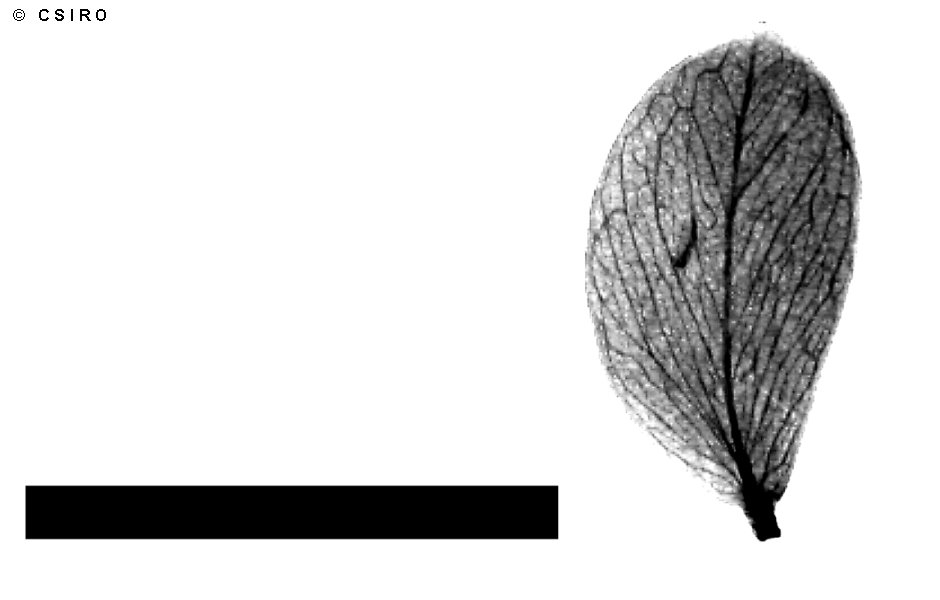Australian Tropical Rainforest Plants - Online edition
Phyllanthus lamprophyllus Mull.Arg.




Mueller Argoviensis, J. (1866) Prodromus 15: 324. Type: In insula javanica Sumanap in summo monte Pedjoudan alt. 1325 ped. s. m. (hb. Hassk. n. 3966!) .. (v.s.).
Phyllanthus
Usually flowers and fruits as a shrub about 1-2 m tall.
Leaves small, leaf blades about 0.7-1 x 0.3-0.4 cm, produced on lateral shoots which resemble compound leaves. Leaves alternate and not spirally arranged, forming two overlapping rows on each twig. Venation obscure. Stipules triangular, about 1-2 mm long. Petiole very short, somewhat swollen and transversely wrinkled.
Male flowers: Flowers shortly pedicellate. Perianth about 3 mm long, petals narrower than the sepals. Staminal filaments fused to form a column with four cup-like anthers at the apex. Female flowers: Flowers sessile, ovary surrounded by fine, small lobes which may be either tepals or glands. Ovules 2 per locule. Style protruding slightly beyond the perianth.
Features not available.
Cotyledons obovate, about 9-10 x 6 mm, margins recurved, venation obscure, petiole very short. First pair of leaves much larger than subsequent leaves, about 9-10 x 5 mm. At the tenth leaf stage: leaves arranged on short lateral shoots which resemble compound leaves. Leaves simple and alternate, leaf blade about 4-6 x 1-2 mm. Stipules very small, triangular, visible with a lens.
Occurs in CYP, NEQ and CEQ. Altitudinal range from near sea level to 1000 m. Grows as a rheophyte along streams usually in open forest country but also occurs in monsoon forest and vine thickets. Also occurs in New Guinea.





